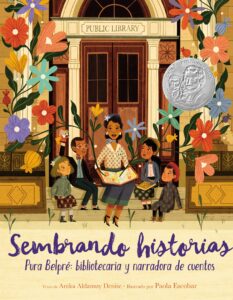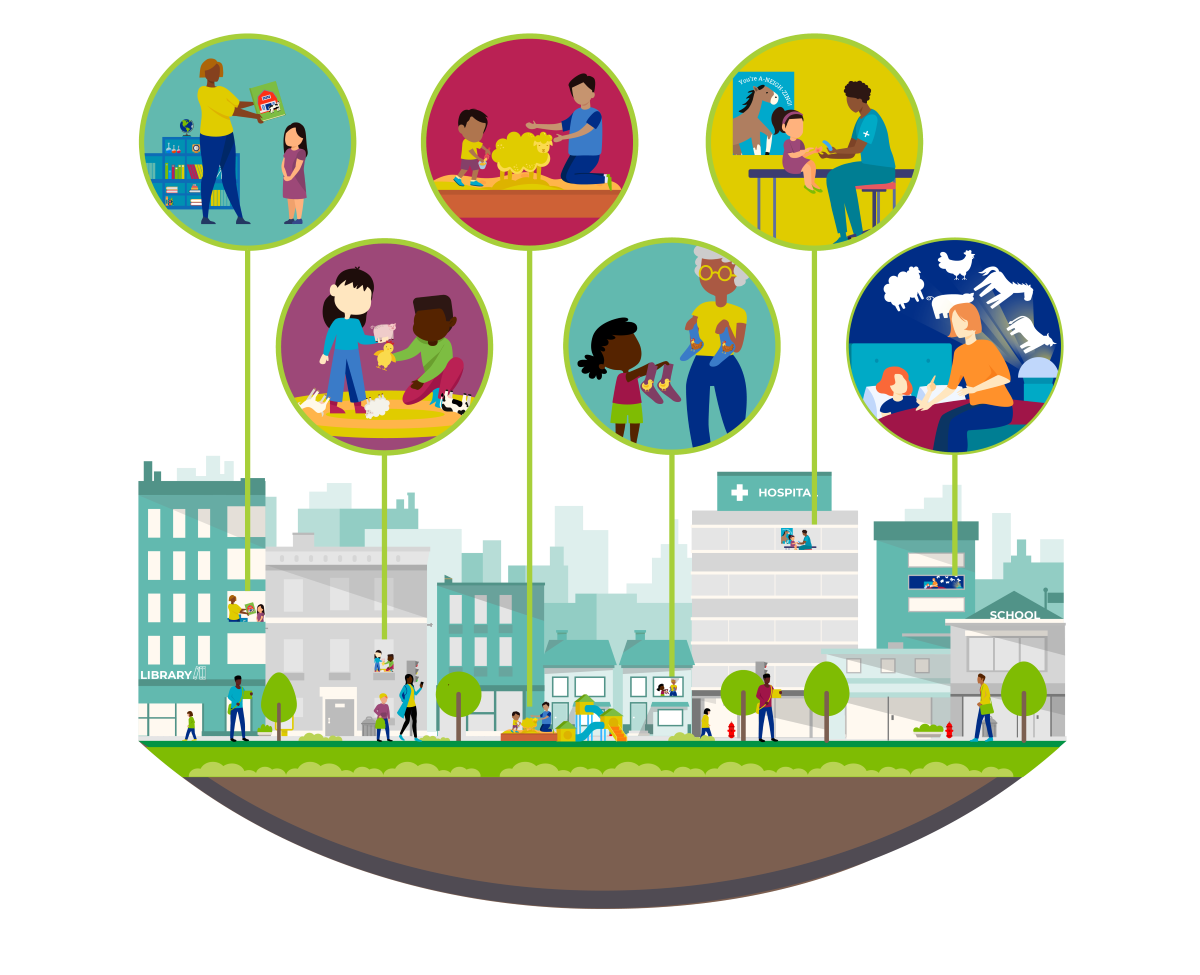12 Children’s Books to Share for Hispanic Heritage Month
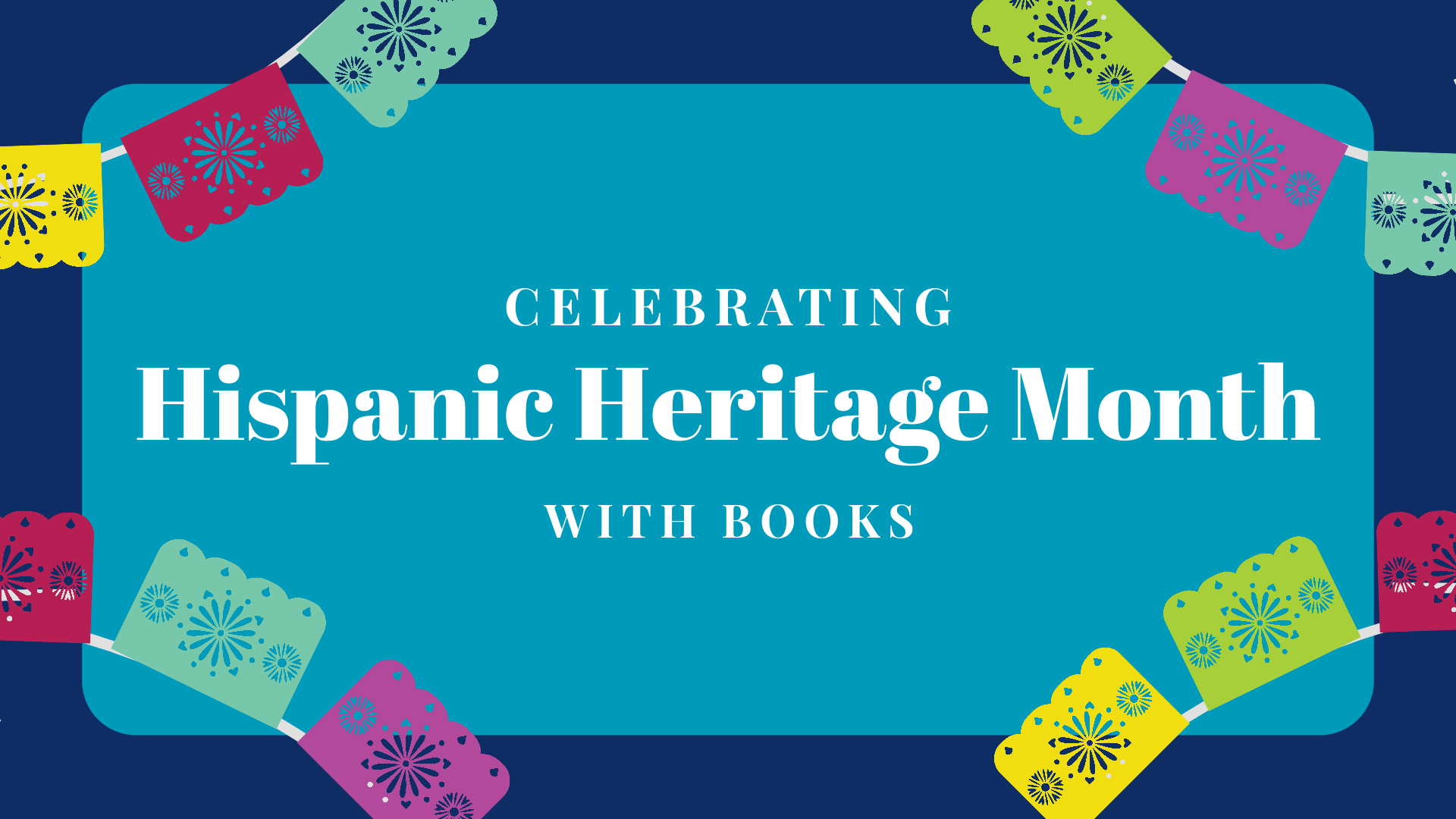
From September 15th to October 15th, we celebrate the enriching and inspiring heritages of people whose ancestors come from Central and South America, Spain, Mexico, and the Caribbean. Coinciding with the independence days for Chile, Costa Rica, El Salvador, Guatemala, Honduras, Mexico, and Nicaragua, there is much to celebrate and learn with children all throughout the month.
A cornerstone of Tandem’s work is the enduring idea that books should reflect children’s lived experiences and introduce them to the lived experiences of others. Whether you are deepening your child’s Hispanic heritage and identity or introducing them to these rich cultures, there are many books that can help promote engaging conversations. The titles in this book list highlight Latine characters in a variety of settings, introducing children to different aspects of the Latine experience. For some children, these books will be mirrors that reflect their backgrounds and experiences; for others, these books will be windows that open up opportunities to learn about friends and neighbors in their community.
When children are able to share their own experiences and learn about the experiences of others, especially those who represent cultures and communities different from their own, it helps them develop empathy, compassion, and the capacity for inclusion—thereby laying the foundation for an equitable society.
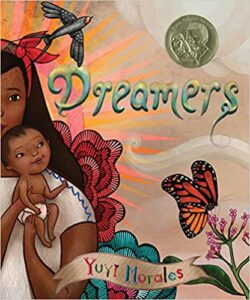
Dreamers
Written by Yuyi Morales
How do you make a new place into your home? This story celebrates immigrants, and all the richness they bring when they come to a new country and make it their home. This book also includes a short essay about the author’s own experience as an immigrant from Veracruz, Mexico, the books that inspire her, and a description of the images used to create this book.
Talking Tip: The characters in this book have had to move and make their home in a new place. Have there been times when you (or your family) have had to make big transitions? Talk about these experiences with your child: how did you feel? What made you excited? What made you nervous?
Additional Resources: Read aloud videos and activity guides available for Dreamers.
This title is also available in Spanish.
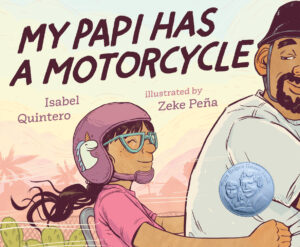
My Papi Has a Motorcycle
Written by Isabel Quintero
Illustrated by Zeke Peña
This is a story about a girl, her father, and their motorcycle trip around their vibrant neighborhood. Observe the places they visit like the local tortillería and the colorful murals that tell the rich history of their immigrant community. Meet the friendly people they encounter like Mr. Garcia, the librarian, and Abuelito and Abuelita who wave and yell out to them as they ride past.
Talking Tip: Take a walk with your child in your neighborhood. When you come back, discuss what you saw and who you met. Talk with your child about how the places in your neighborhood are similar to or different from the ones in the book.
Extra Credit: Create a map of the places you saw and label it. Use it to support your conversation.
Additional Resources: See our read aloud videos and activity guides!
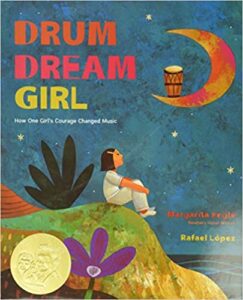
Drum Dream Girl
Written by Margarita Engle
Illustrated by Rafael López
Written in colorful poetic verse, this is a book about a Cuban girl who dreams of becoming a drummer despite being told that only boys play the drums. Inspired by Millo Castro Zaldarriaga, a Chinese-African-Cuban who became Cuba’s first female drummer, this story brings home how, with a little bit of courage, a young girl can follow her dreams and be whatever she wants to be.
Talking Tip: Have you ever been told you can’t do something because of your gender? Talk with your child about how you felt and what you’d do if that happened again. Ask your child if they have had a similar experience and what they would do if it happened again.
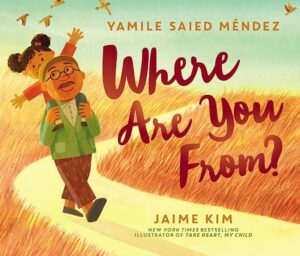
Where Are You From?
Written by Yamile Saied Méndez
Illustrated by Jaime Kim
It starts with what seems like a simple question: Where are you from? This leads a young girl and her abuelo (grandfather) to have a conversation about the richness of their roots, identities, and the importance of their family history. Listen to Abuelo talk about being from the Pampas region of Argentina descending from a mix of gauchos, “brave and strong” and indigenous ancestors who were “once in chains because of the color of their skin.”
Talking Tip: Look at pictures of your family and talk with your child about each person and their stories. How is your family history similar to or different from the characters in the book?
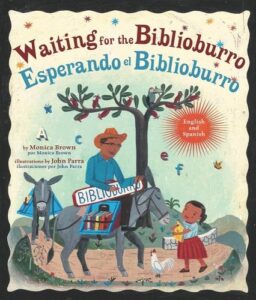
Waiting for the Biblioburro/Esperando El Biblioburro
Written by Monica Brown
Illustrated by John Parra
Inspired by the heroic efforts of real-life librarian Luis Soriano, this book introduces readers to the mobile library that journeys over mountains and through valleys to bring literacy to rural Colombia, and to the children who wait for the Biblioburro.
Talking Tip: The librarian and his burros introduced the children to many wonderful books and inspired Ana to write her own.
Talk with your child about where you find books for your family. If there’s a library that you visit, talk about your experiences at the library, and how they are different from Ana’s.
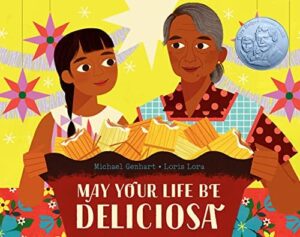
May Your Life Be Deliciosa
Written by Michael Genhart
Illustrated by Loris Lora
Each year on Christmas Eve, Rosie’s family gathers in Abuela’s kitchen to make tamales and tell stories. In this story of how families live, love, learn, and grow together, Rosie’s abuela teaches her how to make a delicious tamale…and a delicious, perfectly seasoned life.
Talking Tip: The author’s note at the end of the book tells us about his life and the inspiration for these stories. He ends by saying “Storytelling connects us all.” Talk with your child about what that means. What family memories, traditions, and stories does this book bring up for you?
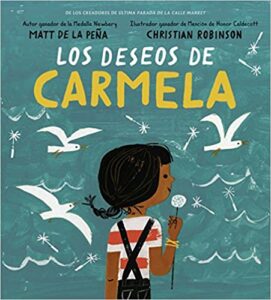
Los Deseos De Carmela
Written by Matt De La Peña
Illustrated by Christian Robinson
It’s the morning of Carmela’s birthday and her wish has already come true: She’s finally old enough to go into town with her brother to do errands. But when she’s given the chance to make another wish, what will it be? A chance for mom to sleep in the beds she cleans in the fancy hotel she works at? Or for the papers dad needs to finally come back home? This heartfelt story is an ode to dreamers, family, and the power of hope.
Talking Tip: Carmela could have used her wishes for anything, but she chose to think of ways to make her family happy. Talk to your child about what they would use their wishes for, and have them explain why.
Additional Resources: See our read aloud videos and activity guides!
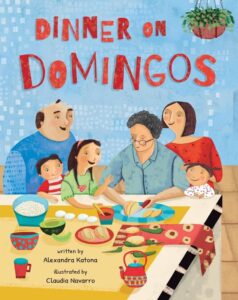
Dinner on Domingos
Written by Alexandra Katona
Illustrated by Claudia Navarro
As a first-generation Latine American girl, Alejandra loves Sunday night dinner at her Abuelita’s house. Basking in the good times she and her family have laughing and eating, Alejandra works up the courage to speak Spanish with Abuelita to bring them closer. This warm and lively book celebrates the multigenerational family, bonding through language, and honoring food traditions. Includes an Ecuadorian Locro (cheesy potato soup) recipe to try together!
Talking Tip: Talk to your child about traditions in your family. Ask them what food and activities they’ve enjoyed learning about from other family members. Compare their experiences to Alejandra’s by discussing similarities or differences.
Sembrando Historias
Written by Anika Aldamuy Denise
Illustrated by Paola Escobar
This is an inspirational book about Pura Belpré: a writer, puppeteer, and the first Puerto Rican librarian in New York City. Noticing the lack of Puerto Rican folktale stories on the library shelves, Pura takes action. She begins by sharing these stories at the library and then with the world when she eventually publishes her own books.
Talking Tip: It is essential to see ourselves reflected in the books we read. All of us have a unique and special story that deserves to be told.
Ask your child: Have you ever read a book that has a character that looks like you? How did it make you feel to see a character who looks like you? How does it make you feel when you can’t find characters who look like you? If you could write a story about someone like you, what would you write about?
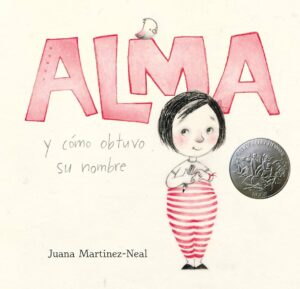
Alma y cómo obtuvo su nombre
Written and Illustrated by Juana Martinez-Neal
Alma Sofia Esperanza José Pura Candela’s father teaches her about the ancestors after whom she is named and why she is their namesake. Through every ancestor’s story, Alma connects with each of them over a shared love, passion, or characteristic.
Talking Tip: Alma is named after several ancestors, each with a unique story and personality. Talk to your child about their name and the story behind it. If they share a name with someone else in the family, explain the connection. Even if they don’t share a name, talk about what traits they may share with some of their family members.
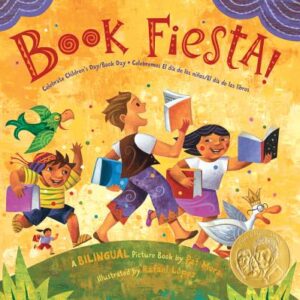
Book Fiesta!
Written by Pat Mora
Illustrated by Rafael López
An ode to reading, books, and children, Book Fiesta celebrates El Día de los Niños, a holiday celebrated in many Latin American countries. Discover all the magical places that books take us and celebrate the children who read them!
Talking Tip: Go on an internet scavenger hunt with your child. Discover what countries celebrate El Día de los Niños and learn about their traditions for that day.
Talk to your child about your own traditions for El Día de los Niños if you have them. If you don’t currently celebrate El Día de los Niños, talk to your child about ways you might want to start celebrating reading, books, and children together.
Additional Resources: See our read aloud videos and activity guides!
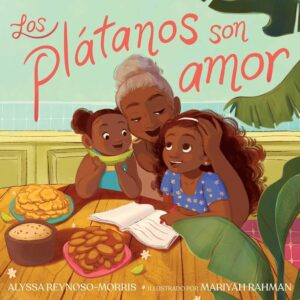
Los Plátanos Son Amor
Written by Alyssa Reynoso-Morris
Illustrated by Mariyah Rahman
Through the process of shopping for plátanos and preparing several mouthwatering dishes using them with her abuela, Esme learns about her family history—and that plátanos are her past, present, and future. This book conveys affection for food and family, and will leave readers hungry and plátanos!
Talking Tip: Are there traditional foods in your family or community that are passed down from one generation to another? Talk with your child about the stories behind these foods and how they are prepared. How is it similar or different from the plátanos dishes Esme and her abuela make?

